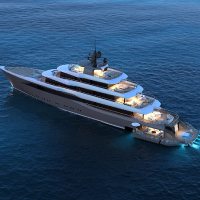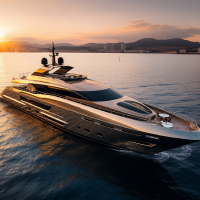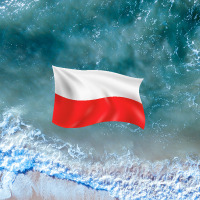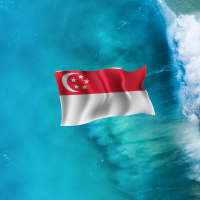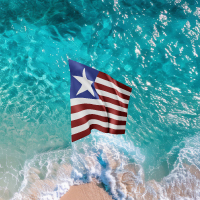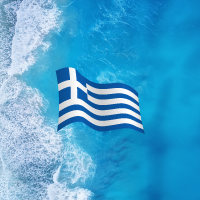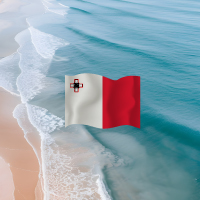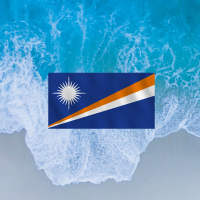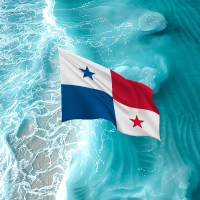
Recommended contact person
The categorization of flags for ships – White, Grey, and Black – serves as a crucial indicator of the safety and regulatory standards of a vessel’s flag state.
This classification system, managed by entities such as the Paris and Tokyo Memoranda of Understanding (MoU) on Port State Control, plays a fundamental role in maritime safety, security, and environmental stewardship. This analysis examines the meanings, categories, pros and cons, and jurisdictions associated with these flags, offering a comprehensive understanding of their impact on global maritime operations.
Understanding White, Grey, and Black Flags
Meaning of the Flags
- White Flags: White flags represent flag states with the highest standards of safety and regulatory compliance. Ships flying these flags are considered low-risk vessels and are subject to fewer inspections by port authorities.
- Grey Flags: Grey flags indicate an intermediate level of compliance. Ships under these flags have a moderate risk profile and are subject to more frequent inspections compared to white-flagged vessels.
- Black Flags: Black flags are assigned to flag states with poor safety records and low regulatory compliance. Ships flying these flags are considered high-risk and are subject to the highest frequency of inspections and scrutiny by port authorities.
Categories and Criteria
The classification into White, Grey, and Black flags is based on the following criteria:
- Inspection History: The frequency and results of inspections carried out by port state control authorities.
- Detention Rates: The number of times ships have been detained due to non-compliance with international regulations.
- Deficiency Rates: The frequency and severity of deficiencies found during inspections.
- Flag State Performance: The overall performance of the flag state in adhering to international maritime conventions and regulations.
Pros and Cons
White Flags
Pros:
- Fewer Inspections: Ships are subject to fewer and less rigorous inspections, saving time and operational costs.
- Higher Credibility: Increased trust and credibility with port authorities, charterers, and insurers.
- Faster Port Clearance: Expedited clearance processes at ports, leading to reduced downtime.
Cons:
- High Standards of Compliance: Maintaining the high standards required for white flag status can be costly and demanding.
Grey Flags
Pros:
- Balanced Inspection Frequency: Ships are inspected more frequently than white-flagged vessels but less than black-flagged ones, providing a balanced approach to safety oversight.
- Moderate Costs: The cost of compliance is typically lower than for white-flagged vessels, making it accessible for a wider range of operators.
Cons:
- Increased Scrutiny: Ships face more frequent inspections, which can lead to operational delays and increased costs.
- Perception Issues: Grey-flagged ships might be viewed with some suspicion, affecting chartering opportunities and insurance rates.
Black Flags
Pros:
- Lower Initial Costs: Registering under a black-flagged state can be less expensive initially, attracting operators with lower budgets.
- Lenient Regulations: These flags often have less stringent regulatory requirements, which can reduce administrative burdens.
Cons:
- Frequent Inspections: High frequency of inspections can lead to significant operational delays and increased costs.
- Negative Perception: Poor reputation can impact chartering opportunities, insurance rates, and overall marketability.
- Higher Risk of Detention: Increased risk of detention and associated costs due to non-compliance with international standards.
The New Performance Lists of Paris MoU
During the 57th meeting of the Paris MoU Committee, the 2023 inspection results were approved and the new performance lists for flag States and Recognised Organisations were adopted.
As from July 1st, 2024, the new performance lists of Paris MoU will be used for calculating the Ship Risk Profile. The “White, Grey and Black (WGB) List” is determined by the total number of inspections and detentions over a rolling 3-year period, for flags that have had at least 30 inspections during that time.
A non-exhaustive list will follow with the most frequent used flags and their classification – in terms of performance – in white, grey and black (the classification will be based on the Paris MoU latest performance lists), while referring to their main characteristics.
8 Most Frequently Used Flags on the Paris MoU White List
- Liberia: Liberia, one of the largest ship registries, is known for its stringent adherence to international maritime regulations and safety standards.
- Marshall Islands: The Marshall Islands ship registry is one of the largest in the world, consistently ranking among the top three by tonnage. Known for high safety and environmental standards, the Marshall Islands flag is respected globally.
- Hong Kong: The Hong Kong flag is chosen by many shipowners for its favourable tax environment, high safety and quality standards, efficient registration process, and strong global reputation.
- Singapore: Singapore operates under robust legal and regulatory framework that aligns with international maritime laws and conventions. The Singapore registry is highly regarded for its stringent safety, environmental and quality standards.
- Malta: Malta is renowned for its strong regulatory framework and high standards of safety, making it one of the leading white-flag states.
- Greece: Greece, with its long maritime tradition, has one of the largest merchant fleets in the world and maintains high safety and regulatory standards, resulting in a strong safety record and a high level of compliance. Ships flying the Greek flag are well-regarded globally, facilitating smoother port operations and fewer delays.
- Bahamas: The Bahamas Maritime Authority (BMA) accepts all kinds of vessels to join its register, provided they comply with applicable legal and safety standards. Bahamas is one of the world’s largest registers and it is the world’s leader in cruise passenger ships.
- Cyprus: Cyprus is chosen by many shipowners for its strong global reputation, favourable tax regime, strategic location and high standards in ship maintenance, safety and environmental protection.
8 Most Frequently Used Flags on the Paris MoU Grey List
- Panama: Panama has the largest ship registry in the world by tonnage, with a significant number of vessels flying its flag. Despite some scrutiny, the Panama flag is widely recognized and accepted globally.
- India: Moderate compliance with international standards, with efforts underway to improve safety records.
- Philippines: The Philippines has a growing ship registry, known for its significant number of seafarers employed globally rather than a large number of vessels.
- St. Vincent and the Grenadines: The St. Vincent and the Grenadines Registry is one of the larger open registries, attracting a diverse range of vessel types. While the flag is recognised globally, it may not have the same level of reputation as the top-tier flags, resulting in more frequent and thorough inspections by port state control authorities.
- Cook Islands: The Cook Islands Register is relatively small but is growing and caters to various vessel types. Despite efforts to improve, the Cook Islands remain in the grey category due to moderate compliance.
- Sierra Leone: The Sierra Leone Registry offers flexible regulations regarding ship types, age and crew nationality, which can be beneficial for various types of shipping operations. The performance of ships registered under this flag can be variable, with some vessels meeting high standards and others falling short, impacting the overall perception of the registry.
- Saint Kitts and Nevis: The registration process is designed to be straightforward and efficient, allowing for quick registration with minimal bureaucracy. Ships registered under the St. Kitts and Nevis flag may face more frequent and thorough inspections by port state control authorities due to the flag’s varied reputation.
- Lebanon: The Lebanon registry is currently on the grey list of the Paris MoU, indicating a mixed record in terms of compliance and safety standards, leading to frequent detentions and deficiencies.
8 Most Frequently Used Flags on the Paris MoU Black List
- Belize: Its current black-list status under the Paris MoU presents substantial challenges, including increased scrutiny and operational risks.
- Palau: Despite its inclusion on the black-list of the Paris MoU, the Palau International Ship Registry has been actively working to enhance its maritime regulatory framework, by making efforts to this end, such as by adopting key International Conventions, improving safety and compliance standards and strengthening Port State Control Compliance.
- Togolese Republic: Significant and sustained efforts are required to overcome the challenges associated with its black-list status and to improve its standing with international maritime authorities.
- Tanzania: Despite the challenges posed by its black-list status, the Tanzanian flag continues to attract shipowners for several reasons such as cost-effectiveness, ease of registration and taxation benefits.
- Comoros: Comoros faces challenges in adhering to international maritime standards, resulting in a high-risk profile.
- Moldova: Moldova’s flag state has been criticized for poor safety oversight and high detention rates.
- Cameroon: The flag’s compliance challenges can lead to operational disruptions, including potential delays, increased inspection frequency and regulatory scrutiny.
- Vanuatu: Like the above black-list flags, Vanuatu offers economic benefits and straightforward registration procedures, however it faces challenges in maintaining consistent regulatory compliance, resulting in its high-risk profile.
Implications for Ship Owners and Operators
Operational Efficiency
- White-Flagged Ships: Benefit from operational efficiencies due to fewer inspections and faster port clearances.
- Grey-Flagged Ships: Experience a balanced approach with moderate inspection frequency and reasonable operational costs.
- Black-Flagged Ships: Face significant operational challenges due to frequent inspections and higher detention risks.
Financial Impact
- Insurance Costs: White-flagged ships generally enjoy lower insurance premiums due to their high safety standards, while black-flagged ships face higher premiums.
- Chartering Opportunities: Ships with white flags have better chartering opportunities compared to those with grey or black flags, which can be viewed with caution by charterers.
Regulatory Compliance and International Conventions
Compliance with international conventions such as the International Maritime Organization (IMO) standards is a key factor in determining flag status.
The primary conventions include:
- SOLAS (Safety of Life at Sea): Focuses on minimum safety standards for ships, crucial for white-flag status.
- MARPOL (Marine Pollution): Addresses pollution prevention from ships, with strict adherence required for white-flagged vessels.
- MLC (Maritime Labour Convention): Ensures fair working conditions for seafarers, impacting the flag status based on compliance.
AGPLAW’s Global Ship Registration Services
AGPLAW offers comprehensive global ship registration services, ensuring that your vessel complies with the highest international standards. Our expertise spans across white, grey, and black flag jurisdictions, providing tailored solutions to meet your operational and regulatory needs. Whether you seek the credibility of a white flag, the balanced approach of a grey flag, or the cost-effective entry of a black flag, AGPLAW ensures seamless registration and ongoing support for your maritime ventures.
The categorization of White, Grey, and Black flags plays a vital role in the maritime industry, influencing operational efficiency, financial performance, and regulatory compliance. Understanding the implications of each flag category helps ship owners and operators make informed decisions, ensuring safe and efficient maritime operations. AGPLAW stands ready to assist in explaining these complexities, offering global ship registration services that align with your strategic goals and regulatory requirements.
For all enquiries please contact our team of experts at agp@agplaw.com
The information provided by AGPLAW | A.G. Paphitis & Co. LLC is for general informational purposes only and should not be construed as professional or formal legal advice. You should not act or refrain from acting based on any information provided above without obtaining legal or other professional advice.





